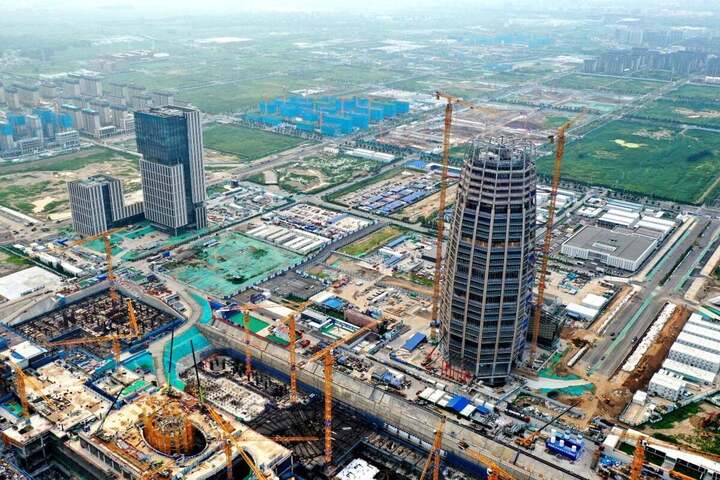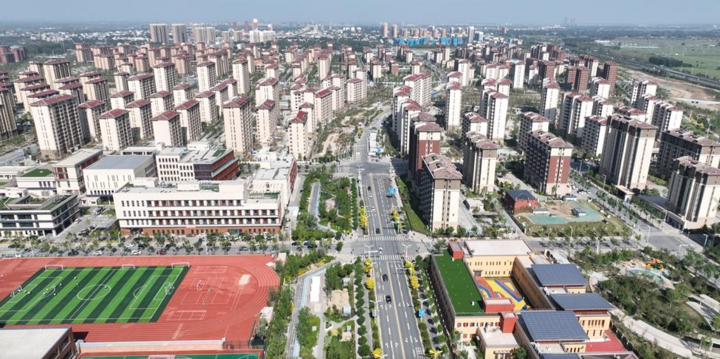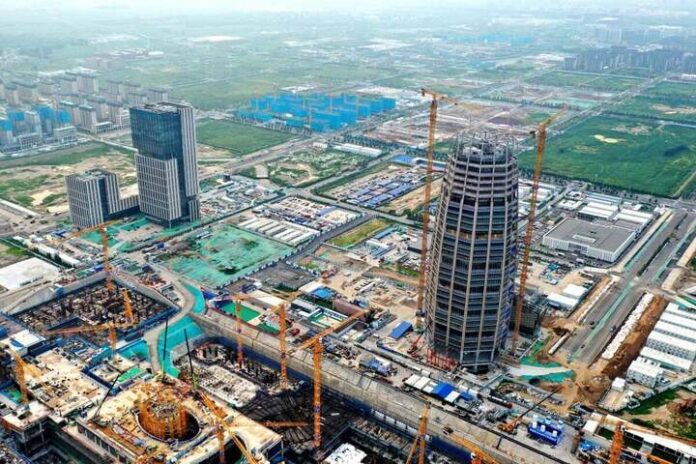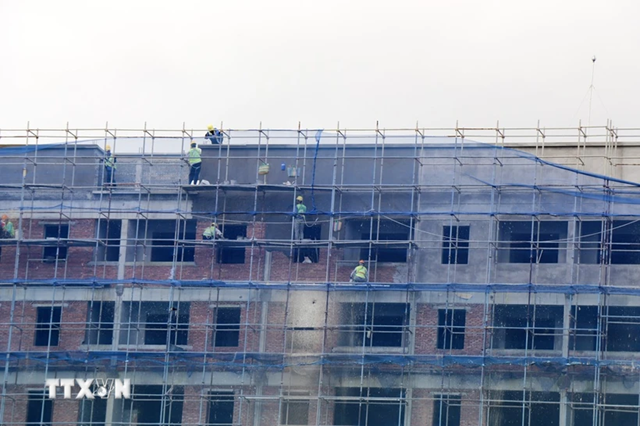The SCMP reported that to fund the future mega-city, one of Chinese President Xi Jinping’s pet projects for almost a decade, the country has accelerated the issuance of special long-term bonds. The aim is to ensure that this vast city is “basically completed” by 2035.

Hundreds of billions of yuan have been invested in the construction of the new Xiong’an New Area in Hebei Province, China. (Photo: Xinhua News Agency)
The Xiong’an New Area administration in Hebei Province, about 100 km south of China’s capital, Beijing, sold five batches of government bonds in the third quarter, all dedicated to the area’s development.
The five issuances raised more than CNY 14 billion (USD 1.9 billion), marking the busiest quarter for construction financing in six years since the bonds for the new area were first issued.
Most of the bonds will mature after 30 years, with annual interest rates ranging from 2.23% to 2.52%, according to Celma.org.cn, the national platform for disclosing local government debt information. A 20-year bond was also issued, yielding 2.47%.
The bond yields are very close to those of Chinese government bonds of the same tenor.
Since being dubbed China’s “city of the future” in 2017, the Xiong’an New Area has issued a total of CNY 246.3 billion (USD 33.99 billion) in special bonds.
According to state media, as of October this year, more than CNY 760 billion (USD 104.89 billion) had been invested in the city’s construction, including roads, residential areas, schools, hospitals, and a high-speed railway station connecting the capital, Beijing, with the major port city of Tianjin.

The Xiong’an New Area is envisioned as a model city to address China’s over-urbanization issues. (Photo: Baidu)
Located at the center of the Beijing-Tianjin-Hebei cluster, the Xiong’an New Area was initially designed to ease population pressure on the capital region while promoting regional development.
However, policymakers have bigger ambitions, hoping to build an environmentally friendly and innovative city.
According to the construction plan, Xiong’an will “basically develop into a modern socialist city” by 2035. By the middle of the 21st century, if all goes according to plan, it will be seen as a model city to address China’s over-urbanization issues.
The new mega-city has an official resident population of about 1.2 million as of the end of 2023. However, the SCMP noted that the streets are currently sparsely populated, and many commercial spaces remain vacant.
Nevertheless, real estate brokers and kindergartens report increasing activity in the area, indicating that more Beijing residents are preparing to relocate there.
Several state-owned industrial groups, including China Satellite Network Group, have set up headquarters in Xiong’an. About 300 state-owned enterprises have also established branches in the city, and some universities in Beijing plan to open additional campuses there.
According to the Hebei Daily, the Xiong’an New Area is enjoying the lowest enterprise financing interest rates in the province. The mega-city is also leading the way in using digital yuan for government procurement contract payments.
The Great 1688 Shopping Festival: A Bonanza of Deals for Vietnam
In a swift move, China’s leading wholesale e-commerce platform, 1688, has launched a series of promotions and marketing campaigns targeted at Vietnamese consumers, just shortly after its Vietnamese language version went live. With competitive pricing compared to domestic e-commerce platforms, 1688 is making a bold statement in the Vietnamese market.
“Vietnamese Agricultural Products Synced with Chinese E-commerce Platforms”
The Vietnamese agricultural products store on Chinese e-commerce and social media platforms will operate under a “goods-seeking-people” model. This innovative approach empowers Vietnamese suppliers to sell directly to Chinese consumers and establish their branded products in the Chinese market.





















